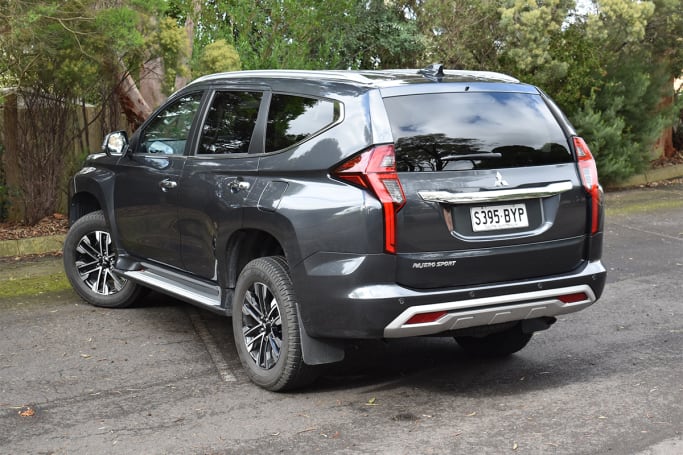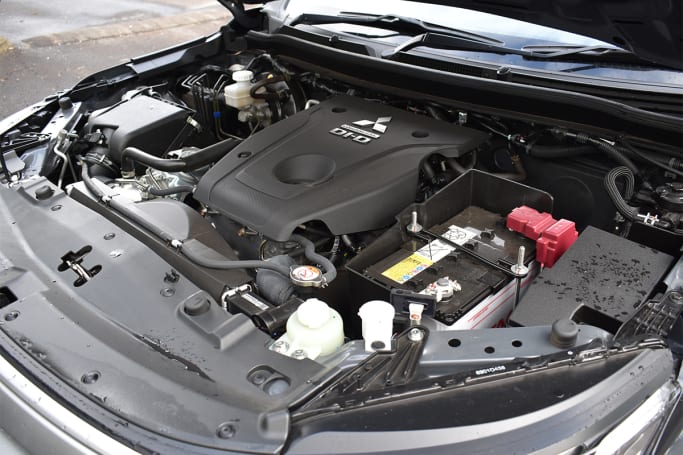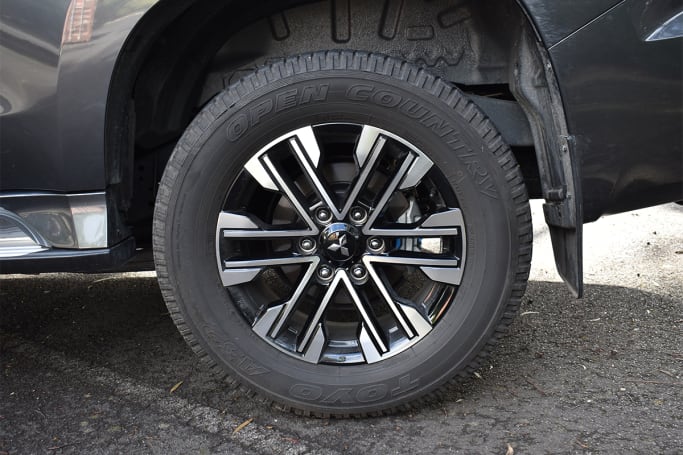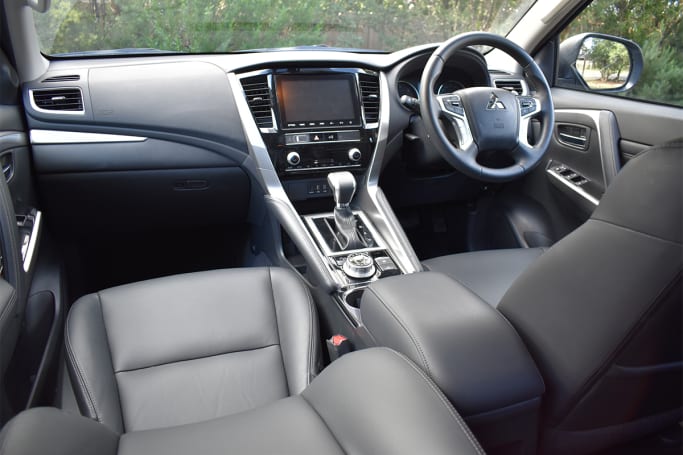Discretionary spending is always the first to suffer in any global crisis, when cautious consumers suddenly restrict their spending to essential items only. In that context, the latest VFACTs figures from the Federal Chamber of Automotive Industries make sobering reading.
In April 2020, at the peak of Australia’s economic shutdown caused by the coronavirus pandemic, new car sales suffered a devastating 48.5 per cent drop compared to the same period a year before. That’s the largest single decrease of any month since VFACTs figures were first recorded in 1991. And in May 2020, although sales improved they were still down more than 35 per cent compared to a year earlier.
This comes on the back of two years of declining new car sales caused by a variety of “environmental, economic and political factors, along with tight credit lending restrictions,” according to the FCAI.
And thanks to a nationwide ban on nearly all outdoor recreational activities, it’s no surprise that the 26 contenders in the ‘Large SUVs under $70,000’ segment have been doing it tough. Which brings us to our latest long-term test vehicle, the Pajero Sport. It’s always been a strong competitor since its launch in 2016 and despite a year-to-date sales decline of more than 21 per cent compared to 2019, it continues to hold its ground against dozens of rivals which, in some cases, have suffered larger declines.
For example, with a 7.1 per cent share of this segment up to and including May 2020, the Pajero Sport currently outsells popular players like the Hyundai Santa Fe, Mazda CX-9 and Subaru Outback to name a few. And it’s outsold only by the perpetually dominant Toyota Prado (19.6 per cent) and Toyota Kluger (11.1 per cent) while nipping at the heels of Isuzu’s MU-X (7.4 per cent).
Given that it’s derived from Mitsubishi’s Triton ute, the Pajero Sport is also one of several heavy-duty SUVs that share similar high-riding ute parentage. And in that context, with 2272 units sold so far this year to the end of May 2020, it leads the Ford Ranger-derived Everest (2024), Toyota HiLux-derived Fortuner (933) and Holden Colorado-derived Trailblazer (867) and is outsold only by the Isuzu D-MAX-derived MU-X (2359 units).
So, when Mitsubishi Australia offered CarsGuide an MY20 Pajero Sport in GLS seven-seater specification for an extended three-month review, I was keen to get the keys to better understand why this high-riding wagon maintains its market position and relatively robust sales in such tough times. The extra driveway time allows our family of four (including two teenagers) to dig deeper into the real-world ownership experience.

For starters, it’s competitively priced against its ute-derived seven-seater 4x4 wagon rivals. The mid-level GLS, which slots between the base GLX and top-shelf Exceed, has a list price of $52,490. That’s $1700 more than a Toyota Fortuner GXL equivalent at $50,790, identical to the (now discontinued) Holden Trailblazer LTZ and cheaper than the Isuzu MU-X LS-U at $53,600. And it’s substantially cheaper than the Ford Everest Trend, with its choice of 3.2 litre ($60,290) or twin-turbo 2.0 litre ($61,790) engines.
The Pajero Sport’s five years/100,000km warranty, however, is the least competitive of this bunch. The Trailblazer, Fortuner and Everest all offer unlimited km on their five-year deals, while the MU-X raises the stakes with a unique six years/150,000km offering. Mind you, for a limited time Mitsubishi has upped its warranty to seven years/150,000km for all vehicles sold between May 1 and June 30. And since launch it’s had only had one minor factory recall, related to a potential corrosion point on the tailgate struts.
The Pajero Sport adheres to a common design theme shared by its ute-derived wagon rivals. They’re all body-on-frame with shorter wheelbases and lengths than the utes on which they’re based. And they all have multi-link coil-spring rear suspensions in preference to their ute parents’ harsher-riding leaf springs.
Its compact dimensions include a 2800mm wheelbase, 4825mm length, 1835mm height and 1815mm width. Even though the Fortuner has the shortest wheelbase and length of these five, the Pajero Sport has the lowest height and narrowest width.
Those two dimensions are most noticeable in the second row of seating, particularly for tall adults riding three abreast where there’s limited shoulder and head room. It’s tolerable for short journeys, but for any trip longer than the local shops the second row is definitely a two-seater only.
You might be surprised to know that tall adults like me can also squeeze into the third row, admittedly with my head touching the roof lining and knees at chest height. Again, you could do short trips with two adults sharing these rear stalls, but they’re best suited to young kids.
With its 2105kg kerb weight and 2775kg GVM, our test vehicle has a 670kg payload limit. It’s also rated to tow up to 3100kg of braked trailer but with its 5400kg GCM (or how much it can legally carry and tow at the same time) that would leave a legal payload of just 195kg, which could easily be used up by only two adults.A more practical ‘real world’ compromise would be to base the braked towing limit on the 2775kg GVM, which drops the tow rating from 3100kg to 2625kg but allows you to keep the full 670kg payload.
The 2.4-litre four-cylinder turbo-diesel shared with the Triton is the smallest displacement engine in this group, apart from the Everest’s optional 2.0-litre four which is ‘boosted’ somewhat with its unique twin-turbochargers.
Even so, with 133kW at 3500rpm and 430Nm at 2500rpm, the Mitsubishi’s outputs are competitive, which showcases its efficiency. In fact, the torque figure equals that of the Land Cruiser 70 Series’ 4.5-litre V8 turbo-diesel - which is more than 2.0 litres larger in displacement with four extra cylinders!

The smooth-shifting eight-speed automatic matches the engine’s refinement, with overdrive on seventh and eighth ratios for economical highway cruising and a manual-shift option using the steering wheel paddle-shifters.
Mitsubishi’s excellent Super-Select II 4WD system offers a unique choice of rear-wheel drive (2H), full-time 4WD (4H) which is great for icy or muddy roads, centre diff locked (4HLc) and centre diff locked low range (4LLc). There’s also a choice of four specific off-road drive modes to maximise traction and stability on gravel, mud/snow, sand and rock. And if that’s not enough to get you out of trouble, there’s also a rear diff locker.
The GLS’s standard equipment list is far from frugal for a middle-tier model, even though it misses out on the Exceed’s heated front seats, premium audio and sat-nav. People seem to either love or loathe the dramatic frontal styling. Either way, it’s a classy-looking vehicle with a tasteful blend of chrome and satin chrome finishes, 18-inch alloys with 265/60R18 tyres and matching spare, LED headlights/fog lights/DRL, privacy glass, side-steps and roof rails.

Inside there’s leather-appointed seats with power adjustment for the front two, plus a tilt-and-reach adjustable leather-bound steering wheel, leather-bound gearshift, dual-zone climate control with rear vents, side/rear window demisters, power tailgate, three 12-volt sockets, two USB sockets and a 220V AC power outlet, six cup holders, four bottle holders and numerous storage options among the highlights.
There’s also a six-speaker multimedia system with 8.0-inch colour touchscreen and multiple connectivity including smartphone link display audio, Apple CarPlay/Android Auto and DAB radio on the menu.

It has a five-star ANCAP safety rating (tested October 2015), seven airbags including front and rear side-curtains and a suite of active safety features headlined by a forward collision mitigation system, which is Mitsubishi speak for AEB. There’s also a reversing camera and rear parking sensors, plus three top-tether and two ISOFIX child seat anchorage points on the second row of seats.
Even so, the GLS does miss out on some useful safety exclusive to the Exceed including blind-spot warning, lane-change assist, rear cross-traffic alert, 360-degree camera and front parking sensors.
The second and third rows of seating, which feature split-folding function and recline adjustment, can be easily reconfigured to suit different requirements. There’s 131 litres of cargo volume behind the third row of seats (measured to the top of the backrest) which is handy for carrying small shopping loads. With the third row folded, load volume expands to 502 litres, which is great for larger shopping loads or carrying the family pets.
With the second and third rows folded, total load volume grows to 1488 litres (measured to the roof). That’s almost 1.5 cubic metres, which turns the Pajero Sport into a mini-van which can carry anything from a load of cardboard to the recycling centre, a mountain bike (lying flat), an outdoor furniture setting or many other things you may need to transport.
Women tend to like high-riding off-roaders because they provide a commanding view of the road and they feel solid and safe. That’s understandable and two major brownie points in the Pajero Sport’s favour as far as my wife is concerned, so we’re off to a good start.
She also loves how it looks and the supple ride of its four-coil suspension (make that four brownie points). Its short wheelbase and compact dimensions also make it easy for her to manoeuvre in traffic and slot into tight shopping centre carparks, where the power tailgate is also appreciated (that’s an even half-dozen!)
Overall, she’s found it easy to live with and pretty hard to fault so far. However, she does wish it had heated seats (she hates Melbourne winters) and that the central-locking switch on the driver’s door was illuminated at night, to make it easier to locate and activate.

Explore the Mitsubishi Pajero Sport in 3D
When we collected the GLS it had 1476km on the odometer and in our first month of ‘ownership’ we added 1102km during the toughest Stage Three coronavirus restrictions. It made me realise how far we drive each week, even when its limited to essential shopping and work duties in the metro area.
Given the stop-start nature of this driving and that it weighs more than two tonnes, the Pajero Sport displayed good fuel economy. Mitsubishi claims a combined average of 8.0L/100km, but our own figure based on fuel bowser and tripmeter readings was 10.8L/100km at our first refill, after covering 518km. This improved to 9.9L/100km when we refilled the 68-litre tank for the second time, after covering another 584km.
So, the first month of ownership was pretty much as we expected. The Pajero Sport GLS is an excellent all-rounder and hopefully as coronavirus restrictions ease, we’ll be able to venture further afield to see how it performs away from the big smoke.
Acquired: May 2019
Distance travelled this month: 1102km
Odometer: 2578km
Average fuel consumption for May (at pump): 10.4L/100km



























